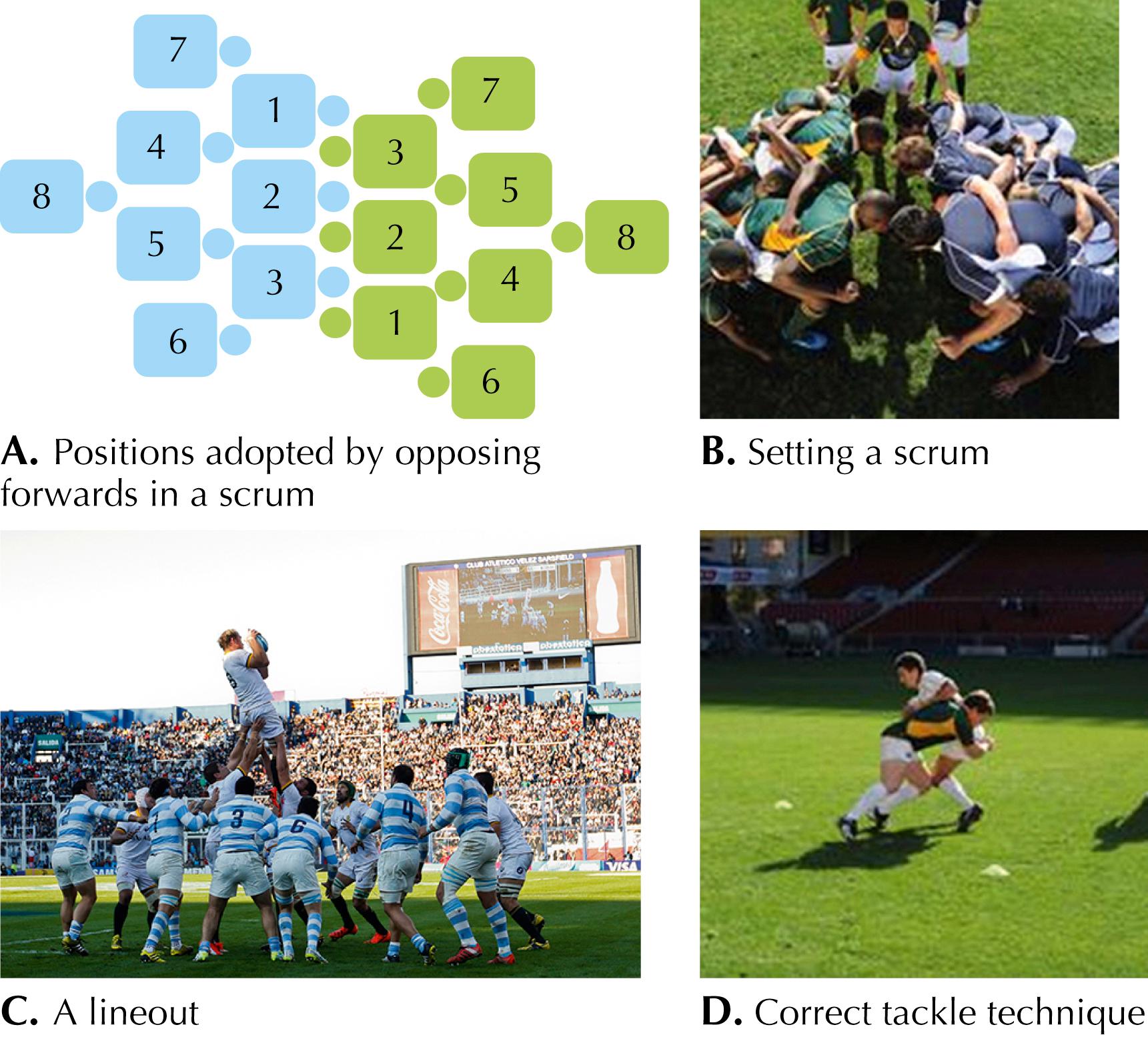Physical Address
304 North Cardinal St.
Dorchester Center, MA 02124
Rugby union (rugby) is a continuous, multiple-sprint, unhelmeted (padded headgear is permitted) collision team sport (>200 tackles per game) played by men and women, boys and girls, in 120 countries across six continents.
Rugby has unique metabolic demands, requiring fitness in multiple domains (aerobic, anaerobic, strength, power, endurance).
The original 15-a-side game lasts for 80 minutes with a 10-minute half-time interval.
The 15-a-side version is the traditional and most popular version, but 7-a-side (“Sevens,” lasting 7 minutes per half) and 10-a-side versions are also played.
Sevens has increased in popularity, has its own professional world circuit, and is a recognized Olympic sport.
Apart from a lack of protective body equipment, the differentiating feature from American football is that rugby is continuous in nature with no “time outs”; this requires injured players to be assessed during play before a decision is made whether to replace them with one of eight reserves.
The international federation, World Rugby (WR) (formerly the International Rugby Board), governs the sport.
Rugby has one of the higher overall rates of injury (around 70/1000 player hours) compared with soccer (28/1000 player hours) and ice hockey (53/1000 player hours).
Risk of injury increases with age and rugby level; this has been attributed to greater size, speed, increased competitiveness, more aggression, and foul play.
Risk of injury is higher in men than in women, with the distribution of injuries varying by sex; females are injured more in training than men and less in tournament play.
Different facets of the game allow players of differing physiques and talents to contribute to different positions. All players may run or kick the ball, tackle, and be involved in rucks and mauls.
The forwards are divided into tight forwards comprising two props, a hooker, and two locks; they are largely responsible for the set pieces of play such as scrums and lineouts, and three “loose forwards” who are also involved in set pieces but who have a mandate to roam more.
Forwards tend to be heavier and place an emphasis on strength and power.
The seven backs tend to be smaller in stature with speed, agility, and skill being the assets.
These large discrepancies in size may result in physical challenges for smaller players.
Field-based team sport lasting up to 80 minutes with 30 players involved in continuous play interrupted only by:
Set play: scrums and lineouts
Penalties
Injury
Half-time (10 minutes)
Scrum: Formation used in the set play restarting play after a knock-on (spilling the ball forward) or forward pass; the forwards from each side bind together, and then the two packs (groups of forwards) come together to allow the scrumhalf to deliver the ball to the scrum. A scrum can also be awarded or chosen in different circumstances by the referee ( Fig. 68.1A and B ).

Lineout: The set play restarting play after the ball has been carried or kicked to touch (out of bounds); both sets of forwards will line up opposite each other with one team throwing the ball between the two lines of forwards. The throw must be directly down the middle of the two lines (see Fig. 68.1C ).
Ruck: Typically, after a runner has made contact with another player and the ball has been delivered to the ground, once any combination of at least three players have bound themselves over the ball, a ruck has been formed. The primary difference from the maul is that the ball is on the ground.
Tackle: Act of physically bringing opposing player who has the ball to the ground; the rugby tackle involves leading with shoulder and wrapping arms around and placing the head behind the ball carrier; legal tackles must not be around the neck or head, and tacklers are required to use both arms and not tip the tackled player head first into the ground (see Fig. 68.1D )
“Blood bin”: A 15-minute period during which players who are bleeding or have open wounds may be removed from the field and temporarily replaced while their wounds are attended to and the bleeding stopped
Head Injury Assessment (HIA): A 12-minute period during which players suspected of having suffered a concussion may be removed from the field and evaluated; this applies only to professional rugby.
Injury patterns are influenced by position: forwards suffer more knee, shoulder, and ankle injuries, whereas backs have a greater incidence of thigh (particularly hamstring) injuries.
Become a Clinical Tree membership for Full access and enjoy Unlimited articles
If you are a member. Log in here